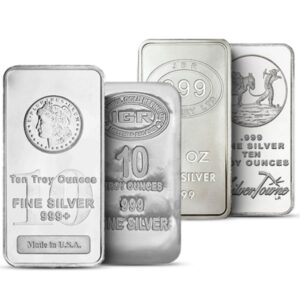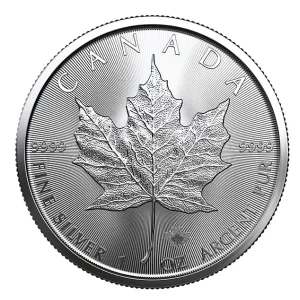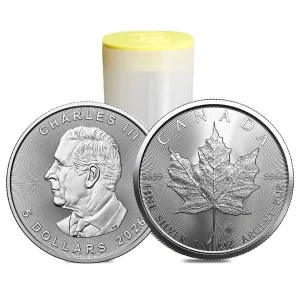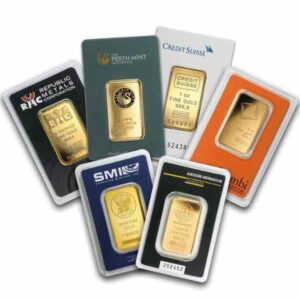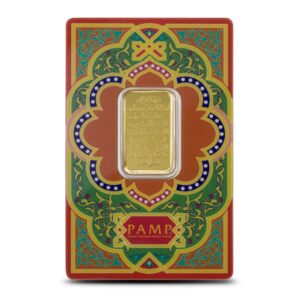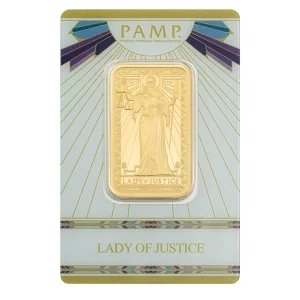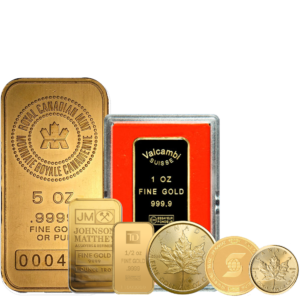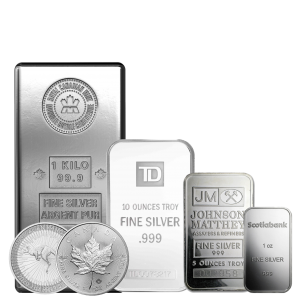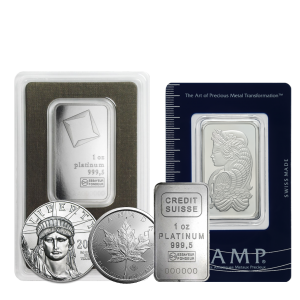In an era where fiat currencies teeter on the brink of irrelevance—plagued by endless printing leading to rampant inflation, and geopolitical manipulations—the world is awakening to the enduring strength of physical commodities. Gold and silver, timeless guardians of wealth, are not mere relics of the past; they are the foundation of our new emerging financial system. As central banks and nations pivot away from volatile paper promises toward the unyielding value of precious metals, we’re witnessing a seismic shift. This newsletter will shine light on five pivotal developments that underscore this transition, proving why stacking physical assets is becoming paramount for all nations and citizens across the board. Forget the fiat illusion; the future is forged in precious metals.
Saudi Arabia Dives into Silver with SLV Investment
Saudi Arabia, long a powerhouse in oil is now diversifying amid energy transitions. It was recently announced the Saudi central bank made a bold move into precious metals by investing heavily in the iShares Silver Trust (SLV). This ETF, backed by physical silver, saw a significant influx from the Kingdom’s sovereign wealth fund in early 2025, signaling a hedge against fiat fragility. Why SLV? Silver’s dual role as an industrial powerhouse—in solar panels, electronics, and EVs—and a monetary safe haven makes it irresistible at current price levels. As we have long discussed, silver is likely the most undervalued asset in the world today as it is the only commodity in the world below its 1980 price high. Especially as the U.S. dollar wobbles under debt burdens exceeding $37 trillion, Saudi’s pivot exposes fiat’s weaknesses: endless devaluation through quantitative easing erodes purchasing power, while silver’s scarcity ensures appreciation of wealth.
This investment isn’t isolated; it’s part of a broader de-dollarization trend being seen in many Eastern countries. By channeling petrodollars into tangible assets, Saudi Arabia is preparing for a multipolar world where commodities, not central bank whims, dictate true value.
UAE’s Gold Reserves Surge 26% in 2025’s Opening Months
The United Arab Emirates continues its aggressive accumulation of gold, boosting reserves by a staggering 26% in the first five months of 2025 alone. This brings their holdings to around 75 tonnes, a clear repudiation of fiat currencies that are under an unpayable debt burden. Gold’s allure lies in its immunity to such threats—unlike the euro or dollar, which can be printed ad infinitum or frozen by political decree as seen with nearly $300 billion of Russian assets being frozen with a pen stroke.
This surge aligns with the UAE’s vision of becoming a global commodities hub, leveraging free zones for gold trading, somethine we have written about in the past. As fiat systems falter—witness Argentina’s peso woes or Turkey’s lira meltdown—the Emirates’ strategy exemplifies prudence, and we know they are not alone as central banks around the world continue to buy incisively.
U.S. Interior Department Elevates Silver to Critical Mineral Status
In a historic first, the United States Department of the Interior has added silver to its critical mineral list, acknowledging its indispensable role in national security and economic vitality. Previously overlooked, silver now joins lithium and cobalt as essential for tech, defense, and renewable energy sectors. Not to mention silver’s role as the backbone of the digital financial system that is having its rails laid in real-time. This designation unlocks federal support for mining and supply chains, countering China’s dominance in rare earths and rapid accumulation of precious metals.
But let’s be clear: this move highlights fiat’s failure to foster innovation. Decades of monetary policy focused on debt-fueled growth have neglected physical resources, leaving the U.S. vulnerable. Silver’s criticality underscores its monetary potential too—historically backing currencies before Nixon’s 1971 fiat shift unleashed inflation. As we rebuild toward a commodity-backed system, silver’s inclusion accelerates domestic production and puts strong upward pressure on price. Investors should view this as validation: physical silver isn’t just an asset; it’s strategic insurance against systemic fiat decay.
Foreign Central Banks Favor Gold Over U.S. Treasuries—First Time Since 1996
A watershed moment: For the first time since 1996, foreign central banks hold more gold than U.S. Treasuries in their reserves. We have long said central banks are accumulating gold and ditching the dollar – this is clear evidence of that truth. Data from the IMF revealed this crossover, driven by distrust in America’s ballooning deficits and weaponization of the dollar. Countries like China, Russia, and India have been net buyers of gold, dumping Treasuries amid fears of default or seizure, as seen in Russia’s asset freezes mentioned previously.
This reversal exposes fiat’s core flaw: it’s faith-based, eroding when governments abuse it. Gold, conversely, requires no counterparty trust—it’s value incarnate. As reserves shift to precious metals, we’re seeing the death knell of dollar hegemony. The next financial system? One anchored in physical commodities, where gold’s finite supply prevents the dilution that plagues fiat. Savvy nations are leading the way; individuals must follow by converting fiat holdings into gold or silver bars and coins before confidence evaporates entirely and a real rush to physical begins at the public level.
Canada and Germany Forge Critical Mineral Pact, Spotlighting Gold and Silver Miners
Rounding out these developments, Canada and Germany have inked a landmark deal on critical minerals, with gold and silver miners at the forefront. This bilateral agreement aims to secure supply chains for EVs, batteries, and green tech, emphasizing North American and European production to bypass adversarial suppliers.
Gold and silver’s starring role here isn’t coincidental; their extraction often comes as a valuable by-product of metals like copper and zinc, all vital for infrastructure. But more profoundly, this pact rebukes fiat-driven globalization, which prioritized cheap labor over resilient, physical assets. As inflation from fiat excess hampers manufacturing—U.S. CPI has been over the Federal Reserve’s 2% goal for over 53 consecutive months—nations are turning to commodities for stability. This collaboration paves the way for a commodity-centric economy, where precious metals underpin trade, not depreciating currencies.
In conclusion, these stories aren’t anomalies; they’re harbingers of a paradigm shift. Fiat currencies, untethered from reality, have bred inequality, bubbles, and cascading crises. Precious metals offer redemption: tangible, scarce, and proven over millennia. As we march toward a new financial order—perhaps a gold-standard revival, a digital blockchain backed by commodities, or a mix of the two—position yourself accordingly. Stacking physical gold and silver has become key. The transition is underway—don’t get left holding worthless paper.
 Hi,
Hi,


